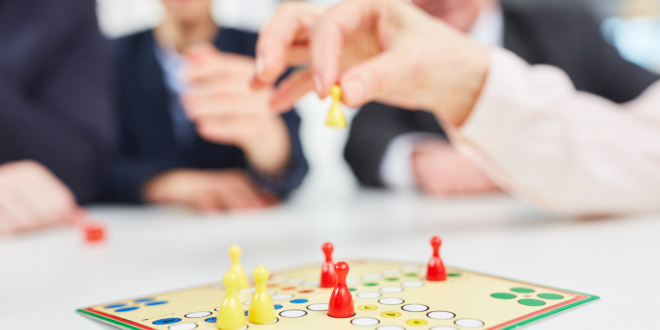Looking To Improve Your Company’s Training Program? Try Gamification
Day one of a brand new job can be an exciting, invigorating experience, one that can rekindle your passion for your career and act as a re-energizing reminder of why you do what you do. At least, until the HR department drops a 50-pound training manual on your desk.
Training isn’t fun for either party involved. For new hires, it means a mountain of paperwork, form-filling, and general red tape that’s standing in the way of what they were looking forward to doing: their job. For employers, training saps company resources and takes up an exorbitant amount of time. And if training isn’t properly conducted, it can seriously harm company performance.
Looking to spruce up their training program and increase engagement from new hires, many HR departments have been turning to gamification, or applying elements of gameplay to different tasks or processes to make them more engaging. Gamification is common in the American workplace, from friendly competitions between departments to the classic “employee of the month” award. But why is it such a popular technique, and how can it be applied to employee onboarding and training?
The Power of Gamification
Gamification is much more than livening up something tedious to make it more interesting or entertaining. It’s an incredibly effective learning tool that’s been proven to engage trainees and help them better learn and retain information. Trainees that learn through gamification don’t just retain more knowledge—they also learn faster and are more likely to apply that knowledge in real-world situations. That’s what makes gamification such a perfect fit for employee training. Employers can be assured that their trainees will be actively putting the policies, processes, and techniques they’re learning into practice.
While every office is different, try incorporating these gamified onboarding methods that are common to most companies.
Break It Down into Levels
Levels are a staple of video games, dating all the way back to forerunners like Pac-Man and Super Mario. The purpose of levels is to break up the user experience by delivering information in more digestible, easier to understand segments. It also instills a sense of progress, and thus accomplishment, into the game.
To apply this to your training program, consider segmenting the process into smaller modules, potentially spread out over the course of a week. Splitting up a 10-hour training session over five days is much more productive and engaging than having your trainees sit in a conference room all day. And if you can show visuals that track their progress—even a simple “60% of training complete” in a learning management system—you’ll engage trainees even more.
Spread Feedback Throughout
Games are constant engines of feedback: players are assigned scores or rankings, statistics are given to identify where users excel or struggle. Traditionally, HR teams tack on feedback at the end of their onboarding, where new hires and trainers can exchange their thoughts and feelings about the training process after it’s all been said and done. But if feedback and check-ins are integrated throughout onboarding, trainees have more opportunities to demonstrate what they’ve learned, and trainers can make adjustments accordingly.
Incorporate a Reward System
By regularly rewarding trainees throughout the onboarding process, you reinforce the knowledge they’ve learned while engaging them in a tried-and-true method. Rewards don’t have to be physical prizes—virtual points displayed on a scoreboard or some sort of experience-based “level up” system work just as well. Some offices even have their trainees progress through different conference rooms or floors, to give them a sense of completion and accomplishment.
Originally featured in UBA’s February 2020 HR Elements Newsletter.


